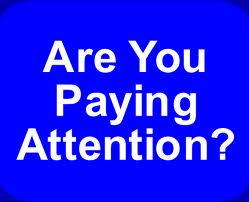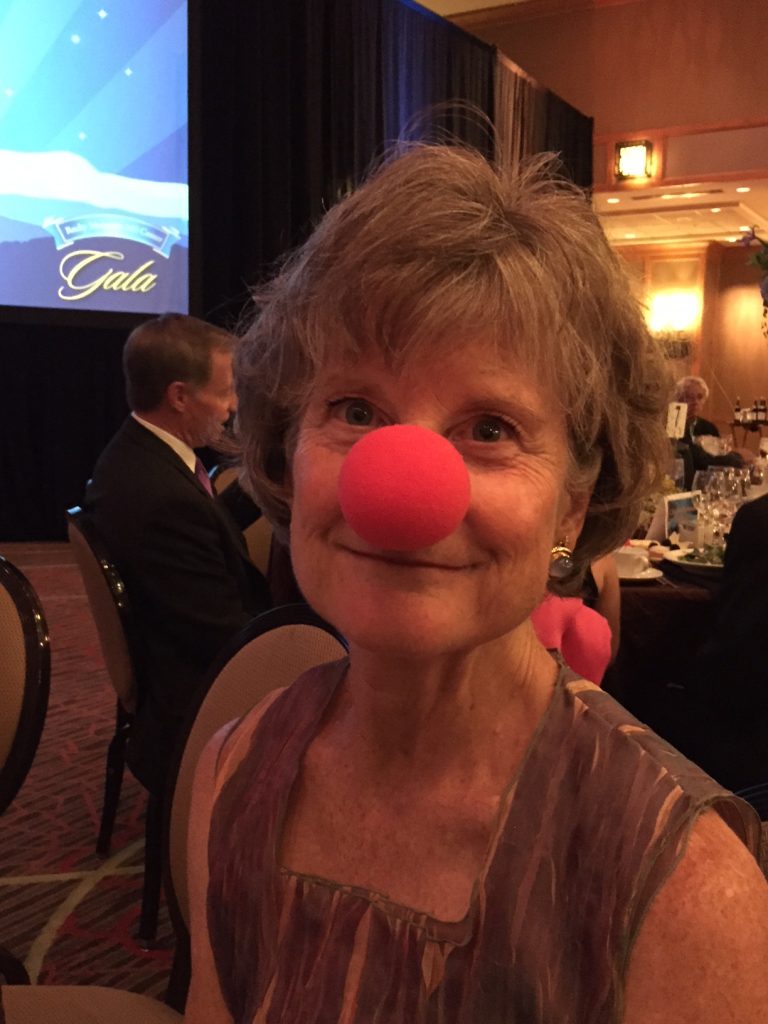Spotting Random Fraud
Let’s say we have an election and 20 precincts report their results. Here’s the total number of votes cast in each precinct:
3271 2987 2769 3389
2587 3266 4022 4231
3779 3378 4388 5327
2964 2864 2676 3653
3453 4156 3668 4218
Why would you suspect fraud?
Before you answer that, let me ask you another question. Would you please write down a random number between one and 20?
Asking you to write down a random number seems like an innocent request. But the word “random” invokes some unusual behavior. It turns out that we all have in our minds a definition of “random” that’s not quite … well, random. Does the number 17 seem random to you? Most people would say, “Sure. That’s pretty random.” Do the numbers 10 and 15 seem random to you? Most people would say, “No. Those aren’t random numbers.”
Why do we have a bias against 10 and 15? Why do we say they aren’t random? Probably because we often round our numbers so that they end in zeros or fives. We say, “I’ll see you in five minutes (or 10 minutes or 15 minutes)”. We rarely say, “I’ll see you in 17 minutes”. In casual conversation, we use numbers that end in zeros or fives far more often than we use numbers that end in other digits. Because we use them frequently, they seem familiar, not random.
So, if we want numbers to look random – as we might in a fraud – we’ll create numbers that fit our assumptions of what random numbers look like. We’ll under-represent numbers that end in fives and zeros and over-represent numbers that end in sevens or threes or nines. But if the numbers are truly random, then all the digits zero through nine should be equally represented.
Now look again at the reported numbers from the precincts. What’s odd is what’s missing. None of the twenty numbers end in five or zero. But if the numbers were truly random, we would expect – in a list of 20 — at least two numbers to end in zero and two more to end in five. The precinct numbers are suspicious. Somebody was trying to make the numbers look random but tripped over their own assumptions about what random numbers look like.
Moral of the story? If you’re going to cheat, check your assumptions at the door.
By the way, I ask my students to write down a random number between one and 20. The most frequent number is 17, followed by 3, 13, 7, and 9. There is a strong bias towards odd numbers and whole numbers. No one has ever written down a number with a fraction.
Temporary Skills versus Durable Skills

I earned my Ph.D. in 1984. The hard skills I learned are now out of date. But I still use many of the soft skills most every day. One hard skill I learned, for instance, was how to code in Fortran. Not much call for that today. But I also learned how to use statistics, do experiments, weigh evidence, reach conclusions, defend my thinking, and communicate effectively. When companies invite me to consult with them, they want my process skills, not my Fortran skills.
We have traditionally paid more attention – and more money – to hard skills. After all, hard skills are … well, hard to come by. As such, they must be worth more. My Fortran skills were hard to master, useful, and hard to replace in the job market. They were worth paying for.
Hard skills, as traditionally defined, are often quantitative, structured, or rules based. They may include accounting, physics, financial modeling, proficiency in certain software packages, programming, data mining, data analysis, diagnostics, and so on. They are also teachable and testable. You can find plenty of coding bootcamps, for instance. If you want to know whether someone can program in Python, you can easily devise a test to find out.
Soft skills, on the other hand, are “…more intrinsic to personality and more difficult to judge quickly.” Soft skills include the ability to get along with others, the ability to explain things, self-control, ability to focus, creativity, empathy, critical thinking, politesse, ability to negotiate effectively, and wisdom. You may not be born with soft skills, but you typically don’t acquire them in the classroom. You learn them from life.
Additionally, hard skills tend to be immune to culture. Programming in Python is pretty much the same whether you’re French, or American, or Japanese. Soft skills often vary by culture. Communicating with senior executives is very different in Tokyo than in New York.
Teaching hard and soft skills also varies. Online education is often effective for hard skills. Many hard skills are rules-based, and we can learn rules remotely. Learning soft skills requires time, coaching, and motivation. Instead of learning rules, we are modeling behaviors.
Because they’re rules-based, hard skills are much more likely to be automated. I used to hire an accountant to do my taxes. Now, I use a software package on my laptop. Most rules-based processes – including computer programming, medical diagnoses, actuarial services, accounting, and stock trading – will likely be automated over the next decade. We won’t need nearly as many people in those professions.
The pace of automation seems to be accelerating as well. I might have worked for 20 to 25 years as a Fortran programmer. Today, I suspect that learning Python will keep you employed for no more than five years or so. Then you’ll be replaced, perhaps by a computer.
For all these reasons, I would like to change the names we use to describe these skills. Instead of hard skills and soft skills, I would call them temporary skills and durable skills. By changing the labels, we will also change our perceptions. Clearly durable skills are more valuable than temporary skills. By describing them more accurately, we can make our investments – in ourselves and others – more wisely. That’s a durable skill.
I’m certainly not the first to propose new labels for hard and soft skills. Click here, here, and here for some of the articles that have shaped my thinking
Making Friends in Nine Minutes

What if we could make friends more quickly and more predictably? Would we make more friends? Would life be better? Would we be happier? Would we take fewer tranquilizers?
What if we could make friends in nine minutes?
We usually think of making friends as a pleasurable process. We don’t usually think of it as a necessary process. We could, I suppose, survive reasonably well without making friends. But what if you have to make friends? How would you do it?
This is a problem that faces some social science researchers. If you want to study relationships – how they form, how they influence behavior, etc. – you need to be able to create relationships and measure their degree of closeness.
For instance, you might want to study the effect of friendship on, say, pro-social behavior. Do people in friendly relationships do more good works or fewer? You invite pairs of friends to participate. Assume that you want to compare pairs of people who have been friends for less than six months. You could sort through pairs of people to find those who fit your criteria. But it’s complicated and imprecise.
Alternatively, you could recruit strangers, pair them up randomly, and induce friendships among them. What’s the advantage? Constantine Sedikides and his colleagues wrote about this in their paper, “The Relationship Closeness Induction Task.” They note that “Because newly formed laboratory relationships lack a history of … past interactions, … the researcher is able to examine the effect of relationship closeness per se on the dependent measurements….” Random assignment also reduces the impact of pesky intervening variables.
The methodological advantage seems clear. But … how do you induce a friendship? Sedikides et. al. describe several methods that didn’t seem to work very well. They then propose the Relationship Closeness Induction Task (RCIT) which is built on “… the principle that a vital feature in the development of a close relationship is reciprocal and escalating self-disclosure.” In simpler terms, by sharing information about yourself (self-disclosing) with a stranger who also shares information, you develop a closer relationship.
The RCIT consists of three lists of questions – 29 questions total — and participants are asked to spend nine minutes “mutually self-disclosing”. They spend one minute on List 1, three minutes on list II, and five minutes on List III. The authors note that the RCIT has proved its validity in four different ways:
- Participants reported a higher level of relationship closeness than did control groups, with no gender differences found.
- RCIT induced closeness created statistically significant impacts on dependent variables in several different studies.
- Participants reported that they had adequate privacy and felt comfortable with the process.
- In the allotted nine minutes, participants answered 90% of the questions.
The original questions were written for college students; they’re the most likely participants in these kinds of studies. With just a bit of imagination, however, you could pull out the college-related questions and substitute other, more relevant questions in your friendship induction process.
I suspect by now that you would like to know the 29 questions. Here they are. Now go out and make some friends. You’ve got nine minutes.
List I – One minute
- What is your name?
- How old are you?
- Where are you from?
- What year are you in at University X?
- What do you think you might major in? Why?
- What made you come to the University of X?
- What’s your favorite class at the University of X? Why?
List II – Three minutes
- What are your hobbies?
- What would you like to do after graduation from the University of X?
- What would be the perfect lifestyle for you?
- What is something you have always wanted to do but probably never will be able to do?
- If you could travel anywhere in the world, where would you go and why?
- What is one strange thing that has happened to you since you have been at the University of X?
- What is one embarrassing thing that has happened to you since arriving at the University of X?
- What is one thing happening in your life that makes you stressed out?
- If you could change anything that happened to you in high school, what would that be?
- If you could change one thing about yourself what would that be?
- Do you miss your family?
- What is one habit you’d like to break?
List III – Five minutes
- If you could have one wish granted, what would that be?
- Is it difficult or easy for you to meet people? Why?
- Describe the last time that you felt lonely.
- What is one emotional experience you’ve had with a close friend?
- What is one of your biggest fears?
- What is your most frightening early memory?
- What is your happiest early childhood memory?
- What is one thing about yourself that most people would consider surprising?
- What is one recent accomplishment that you are proud of?
- Tell me one thing about yourself that most people who already know you don’t know.
Decision Theater

In major corporate decisions, a devil’s advocate can serve an invaluable function. The advocate can help stress test an idea and point out cognitive biases that others might miss. The big idea is put on trial. Executives who proposed the idea serve as defense attorneys. The devil’s advocate is essentially the prosecutor. She looks for weaknesses in the other side’s case and serves up an alternative narrative. She also helps the team protect against the down side. The advocate helps us make the decision right — using a balanced process that tends to dampen major biases.
All too often, however, the process devolves into “decision theater”. We’re just playing roles that don’t improve the decision process but do make us feel better about it. Here’s how I’ve seen it play out in various software companies:
- Only a small number of people play the devil’s advocate (DA) role. They do it voluntarily and they get little or no support in terms of resources or even encouragement. Each time we had a meeting about a big decision, the same people spoke up to say, “Well … let me be a devil’s advocate here …” I admired these people but I also wondered, Why do so few people step forward in this role? How could the company promote this role as a regular part of the decision process?
- In these meetings, the devil’s advocate’s objections were always “handled”. In other words, the leader of the meeting (often the CEO) would thank the devil’s advocate for the input and then give a breezy statement that effectively dismissed the input. We all felt better because we had “considered” the other side. But had we really?
- Prior to the meeting, the devil’s advocate had very few resources to develop a coherent position. The DA didn’t have any staff to gather information or budget to hire consultants, etc. The DA’s position might be very thoughtful .. but it wasn’t well developed with evidence to back it up. It could easily be dismissed.
- This is what I call “decision theater.” We believe we’re contributing to a good decision process, but we’re really just acting out roles.
I certainly respect people who play the devil’s advocate role. To make this more than theater however, organizations need to change the process. How? Well, let’s look at the history of the devil’s advocate.
The Catholic church originated the role of the devil’s advocate in 1587. The advocate plays a key role in the process of canonization — determining whether a person should be declared a saint. The process includes a trial, with one side arguing that the person does indeed deserve sainthood. The other side — led by the devil’s advocate — argues the opposite. The devil’s advocate aims to poke holes in the other side’s argument, For instance, the advocate might claim that the miracles attributed to the person were actually frauds.
From my perspective, the most important element was that the church gave the advocate resources and respect to fulfill the role effectively. The devil’s advocate had resources — time, money, staff — to call on. This differs greatly from devil’s advocates in today’s corporate world, who may speak up but are not institutionally supported. A corporation that wants to debias its decision processes should do what the Catholic church did — institutionalize the role and provide enough support to make it serious.
Scanning The Future From Singapore

Can you use a slide rule? The ability to use one effectively could become an important status symbol in the future.
That’s just one idea that I plucked (with a little extrapolation) from Foresight, the biennial scan-the-horizon publication from Singapore’ s Center for Strategic Futures (CSF). Singapore, of course., is a very small country buffeted by giants. CSF describes the country as a “price-taker” – it must accept prices set by other market players.
So how will Singapore survive? That’s the basic question that CSF aims to answer in a series of symposia, structured thought processes, debates, stories, suggestions, conferences, nudges, and “sandboxes”. The idea is to keep ideas about the future top of mind among Singaporean leaders. As CSF says, “Nobody can predict the future, but we can be less surprised by it.”
Since 2012, CSF has published a Foresight document every other year. (Click here for the complete collection). The 2019 edition was published on July 1 and makes for fascinating reading.
CSF uses a structured process based on scenario planning to scan the horizon and create ideas about the future. (For some background on scenario planning, click here, here, and here). CSF calls its approach Scenario Planning Plus, which “retains Scenario Planning as its core, but taps on a broader suite of tools more suitable for the analysis of weak signals, and thinking about black swans and wild cards.” Scenario Planning Plus has six key purposes:
- Defining focus – is the problem simple, complicated, complex, chaotic, or disorderly? (See the Cynefin Problem Framework Definition).
- Environmental Scanning – identify critical emerging issues.
- Sense making – “… piece together a comprehensive and comprehensible picture of an issue.” CSF develops Driving Force Cards to stimulate creative discussions about these issues. (Click here for the current set).
- Develop possible futures – tell stories about what we do, think, and worry about in the future.
- Design strategies – given the various possibilities, how can we best respond to the future?
- Monitor – keep track of indicators, forward signals, and strategies to understand what’s happening and why. (Reading all of CSF’s Foresight documents gives a sense of how our perceptions have changed in just ten short years).
I encourage you to read through the Foresight document and to print out the Driving Force Cards to use in your planning sessions. They’ll stimulate your thinking in both practical and unexpected ways. To give you a sense of what the Foresight document contains, here are some ideas that I found especially interesting:
- Time banking – a marketplace where we exchange time instead of money. Such a marketplace might help us use our time more wisely.
- Heatstroke vaccinations – what if we can’t stop global warming? Maybe we could enhance humans to live in a warmer world. A vaccine against heatstroke would be a good start.
- Cobots – will robots replace humans in most production processes? Or will a combination of humans and robots – cobots – be a better solution?
And why might using a slide rule become a status symbol? When everything goes digital, being able to use analog devices could become a mark of distinction. We already see audiophiles abandoning digital recordings and returning to analog wax discs. Why not slide rules, too?